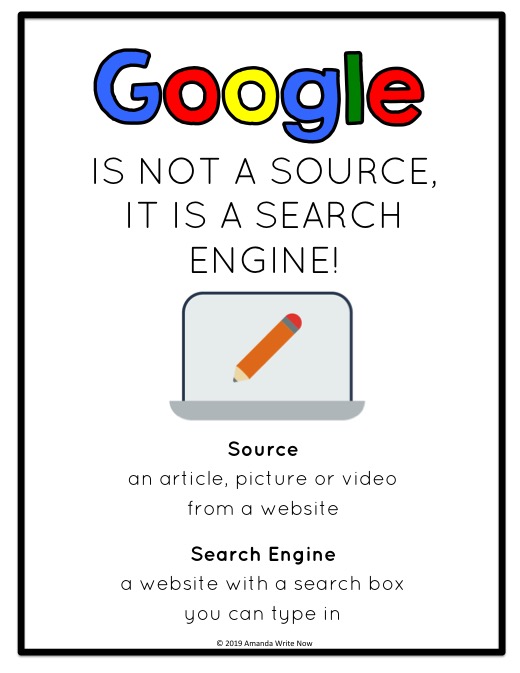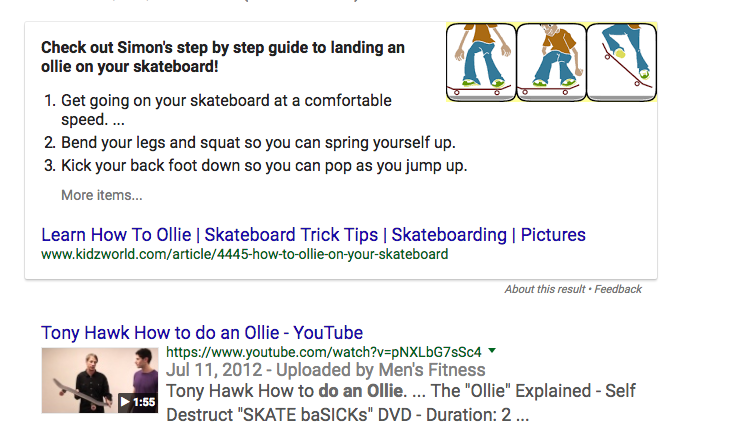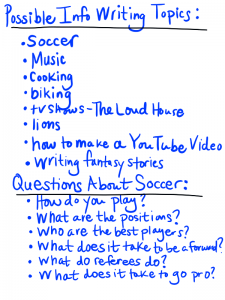
Researching online is easier than ever. But, thoughtlessness is easier than ever too! Classrooms are transforming. They are spending more and more time learning online. This is why it is vital we read articles like this with our students. We need to think about, discuss and question our online habits. Here you’ll find five bad habits exhibited by many students and tips for how to begin discussing and teaching students how to correct these bad habits.
#1 Using Vague Search Terms
When you give students a choice about what they write, they often pick general topics and end up writing uninteresting or rambling drafts. Furthermore, students who want to write about soccer Google “soccer” and are overloaded and overwhelmed with information.
We need to teach students how to narrow their topic and search. The best way I’ve found to do this is through listing.
First, have students list as many broad topics as they can possibly think of. Then have students list questions about each broad topic…
Next, have students use these questions to search Google. A search question such as “How do you play soccer?”, leads to a website that includes terms like “ball control”, “dribbling”, “passing” and “shooting”.
Finally model using these new more specific terms to search Google yet again with new questions such as “how do you control the soccer ball?” and “how do you dribble a soccer ball?” With these methods, students can write a more targeted information piece and find what they are looking for much more easily.
#2 Stopping at Google
It can be quite annoying to see students copying down info from the first answer Google provides and moving on without clicking into the webpage. Google makes it incredibly easy to find answers right on the search results page. This is very convenient but is also sometimes a disservice to kids who need to learn how to question where sources come from.

Before I go into the fix for this bad habit, it is important to remember there is a reason Google has ranked that website first. It is the most relevant result pertaining to the keyword or question searched. If students find their search results in an answer form, that means the search question was specific enough to get such a specific answer. This is a good thing.
A search for “how do you do an ollie?” leads to this result…

Whereas a search for just the word “ollie” leads to this…

Okay, now onto the fix…Model searching using specific questions and clicking on the link to learn more than just what is on the surface. Show students the web address in the green font and explain it is important to click on the link and find out who is responsible for the answer.
Explain that spreading misinformation in our classroom and online is not right, this is why we always check where our information is coming from. Explicit modeling and roaming the room observing what students are doing while researching can go a long way.
Teach students that the first few results are usually ads. Show them how to identify the little green box around the ad title. This may seem obvious to us but for students sometimes it is important to point these details out or ask students to point them out.
#3 Not Reading
I find students often want to rush through the research process so they can start creating. Students love art, they love making things, don’t we all? I’ve often launched and assigned a research project and sent students off to begin writing only to find them playing with fonts in Google Slides. Ugh.
The fix? Designate specific timeframes students can play with the design of their presentation and other timeframes that are silent “research and read time”. Students need silent time to read and process what they read. Reward students with extra “design time” if they can research and read silently for ten minutes straight.
#4 Taking Wordy Notes
Students who are taking notes on the computer often want to type word for word from the source. But this does not lead to learning. Also, students who exhibit habit #3 and aren’t reading are more likely to copy notes verbatim too. Students need to learn how to summarize their learning with key words.
The fix for this habit is simple. Make students hand write their notes. There are many benefits to handwriting notes. Students are more likely to read if they have to handwrite the main ideas from their reading. They are also less likely to copy straight from an article into a Google Doc. Modeling how to make a bulleted list of keyword and ideas can help tremendously too.
Another way to support students in taking notes is to teach them the different ways they can take notes. Model reading one article and taking notes in multiple ways. The picture below provides examples of four types of note taking methods.

#5 Misusing Google Images
Students can be distracted by scrolling through the many, many Google image results of their search. They can scroll and scroll only to find the further you scroll, the weirder it gets. This is quite entertaining for students and is also a big waste of time. And, once students find an image they want they take it without a second thought about questioning the source.
Here are some fixes…
Only let your students use the Google image search function during designated times.
Explain the weirdness and lack of relevance as you scroll further and further through Google images, warn students against doing this.
Teach copyright and fair use. Students should know that it is completely legal for them to use images in their work because they are using it for educational purposes and this is called “Fair Use”. They should know their rights and that even though they aren’t required to credit the creator, it is a respectful thing to do!
Wrap Up…
To wrap up students need to get into the habit of…
- Searching using specific questions
- Clicking through to the source of information Google provides for both websites and images
- Reading articles from articles and summarizing learning by taking brief notes that include key words and ideas
As teachers in this fast transforming digital world, it is essential we model positive online habits. I hope this post has supported you in designing lessons that teach your tech savvy students how to improve their internet research skills.
I’ll leave you with a lesson I taught with my 6th graders about Google image searches….


Hi Amanda,
I’ve been a middle school and high school teacher for 20 years, and I’ve read countless books on the workshop model, but up until now I’ve been struggling because I can’t seem to picture how it’s supposed to look in my classroom with my kids. I stumbled across your podcast as I was looking for YET more resources, and after catching up on the episodes that I missed, you’ve managed to help me picture what workshop could be. Every year I try to commit to learning and implementing one new thing, and next year workshop will be it. I’m looking forward to your summer course and reinvigorating my classroom. Thanks again for the hard work that you put into each podcast, for generously sharing your ideas, and for putting yourself out there to help other teachers grow– it’s very much appreciated!
Trish, thank you for telling me all of this. Your comment makes all that I do worth every minute of my time! Getting this kind of feedback motivates me to continue this journey supporting teachers in implementing the workshop model through this website and podcast:) THANK YOU SO VERY MUCH!